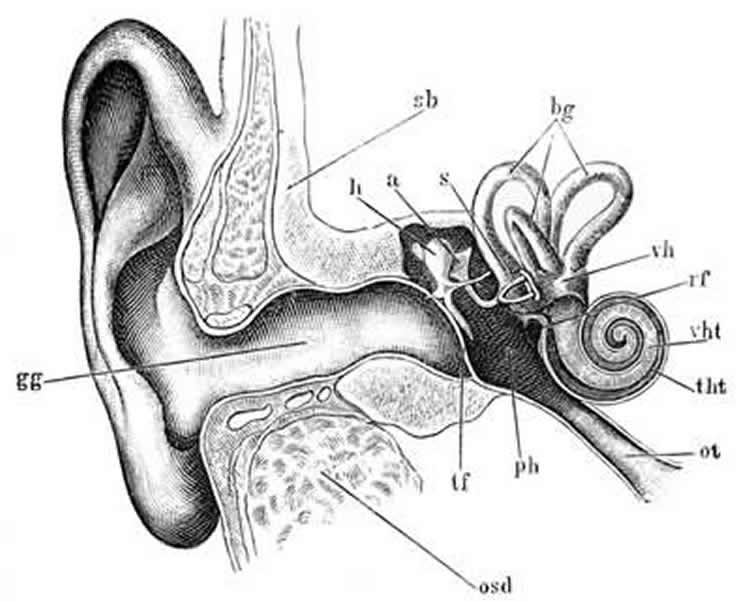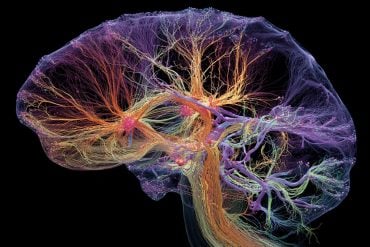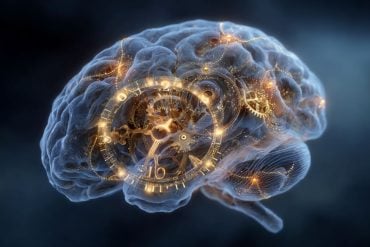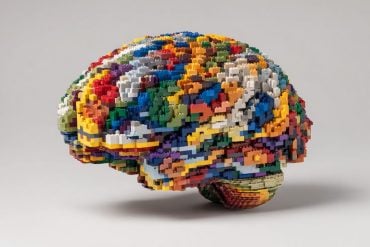Summary: Researchers report the dizzying effect experienced by those who suffer from Tullio phenomena occurs when sound generates pathological fluid mechanical waves in the semicircular canals of the ear.
Source: University of Utah.
For some people, certain sounds like a trumpet blowing a particular tone can make them dizzy, and it’s not because they’re giddy from a Wynton Marsalis melody.
It has been estimated that 1 in 100 people around the world have a congenital inner ear condition known as semicircular canal dehiscence, a thinning of the bone enclosing the inner ear that can lead to vertigo in response to certain sounds, changes in atmospheric pressure or coughing. It is a condition in which a person can feel the same imbalance effects of being drunk just by hearing certain tones, even from the sound of someone’s voice or a musical instrument.
Researchers from the University of Utah, Johns Hopkins School of Medicine and the University of Mississippi have discovered how that happens and have published their findings in the recent issue of Scientific Reports. The lead author is Utah biomedical engineering doctoral student Marta Iversen, and the senior author is Utah biomedical engineering professor Richard Rabbitt.
Normally, the inner-ear balance and hearing organs are encased in solid bone. But in 1929, Italian biologist Pietro Tullio discovered that a hole in that bony enclosure can cause the inner ear semicircular canals to become sensitive to acoustic sounds like a sustained tone from a musical instrument such as a trumpet, violin or piano, even a higher-pitched conversation. This condition causes the eyes to rotate through an automatic reflex that normally would stabilize the image in the eye during head movements. But if the signal from the ear is wrong, the eyes movements are also wrong, causing the patient to feel dizzy.
“It’s very much like the feeling when they’ve had too much to drink. They get dizzy, and they feel nauseous, and they can’t see well and lose their balance,” says Rabbitt. “What our paper is about is the biophysics of how that happens. How does sound excite the inner ear balance organs causing them to send the wrong head-motion signals to the brain?”
The effect can occur in just seconds if the right tone is played, and it can render the person dizzy for tens of seconds even after the tone has stopped.
By monitoring the neurons and inner ear fluid motion in toadfish, which have similar inner ear balance organs as humans, it was discovered that this dizzying effect occurs when the sound generates pathological fluid mechanical waves in the semicircular canals of the ear. Normally, inner ear fluid moves when you rotate your head, and your eyes automatically counterrotate to stabilize the image on the retina.
But when there is a pathological hole in the bone certain acoustic tones cause the inner ear fluid to pump, and as a result, the ear sends an incorrect signal to the brain that you’re rotating your head when you’re not.

“Your eyes will counterrotate the wrong way, and it will look like the world is spinning,” Rabbitt says.
Fortunately, surgery to repair the dehiscence can help patients, Rabbitt says, but researchers now understand the connection of how a small hole in bone can create a lifetime of debilitating dizziness for many.
“What wasn’t known was the ‘Why?’ What exactly causes the symptoms patients have?” he says. “This finally connects the symptoms and the dehiscence in a precise biophysical way.”
Funding: National Institutes of Health, David M. Rubenstein Hearing Center funded this study.
Source: Vince Horiuchi – University of Utah
Publisher: Organized by NeuroscienceNews.com.
Image Source: NeuroscienceNews.com image is in the public domain
Original Research: Open access research for “Sound abnormally stimulates the vestibular system in canal dehiscence syndrome by generating pathological fluid-mechanical waves” by M. M. Iversen, H. Zhu, W. Zhou, C. C. Della Santina, J. P. Carey & R. D. Rabbitt in Scientific Reports. Published July 6 2018.
doi:10.1038/s41598-018-28592-7
[cbtabs][cbtab title=”MLA”]University of Utah”Giddy for the Sound: Why Some People Get Dizzy Hearing Certain Sounds.” NeuroscienceNews. NeuroscienceNews, 10 July 2018.
<https://neurosciencenews.com/sound-dizzy-vertigo-9545/>.[/cbtab][cbtab title=”APA”]University of Utah(2018, July 10). Giddy for the Sound: Why Some People Get Dizzy Hearing Certain Sounds. NeuroscienceNews. Retrieved July 10, 2018 from https://neurosciencenews.com/sound-dizzy-vertigo-9545/[/cbtab][cbtab title=”Chicago”]University of Utah”Giddy for the Sound: Why Some People Get Dizzy Hearing Certain Sounds.” https://neurosciencenews.com/sound-dizzy-vertigo-9545/ (accessed July 10, 2018).[/cbtab][/cbtabs]
Abstract
Sound abnormally stimulates the vestibular system in canal dehiscence syndrome by generating pathological fluid-mechanical waves
Individuals suffering from Tullio phenomena experience dizziness, vertigo, and reflexive eye movements (nystagmus) when exposed to seemingly benign acoustic stimuli. The most common cause is a defect in the bone enclosing the vestibular semicircular canals of the inner ear. Surgical repair often corrects the problem, but the precise mechanisms underlying Tullio phenomenon are not known. In the present work we quantified the phenomenon in an animal model of the condition by recording fluid motion in the semicircular canals and neural activity evoked by auditory-frequency stimulation. Results demonstrate short-latency phase-locked afferent neural responses, slowly developing sustained changes in neural discharge rate, and nonlinear fluid pumping in the affected semicircular canal. Experimental data compare favorably to predictions of a nonlinear computational model. Results identify the biophysical origin of Tullio phenomenon in pathological sound-evoked fluid-mechanical waves in the inner ear. Sound energy entering the inner ear at the oval window excites fluid motion at the location of the defect, giving rise to traveling waves that subsequently excite mechano-electrical transduction in the vestibular sensory organs by vibration and nonlinear fluid pumping.






